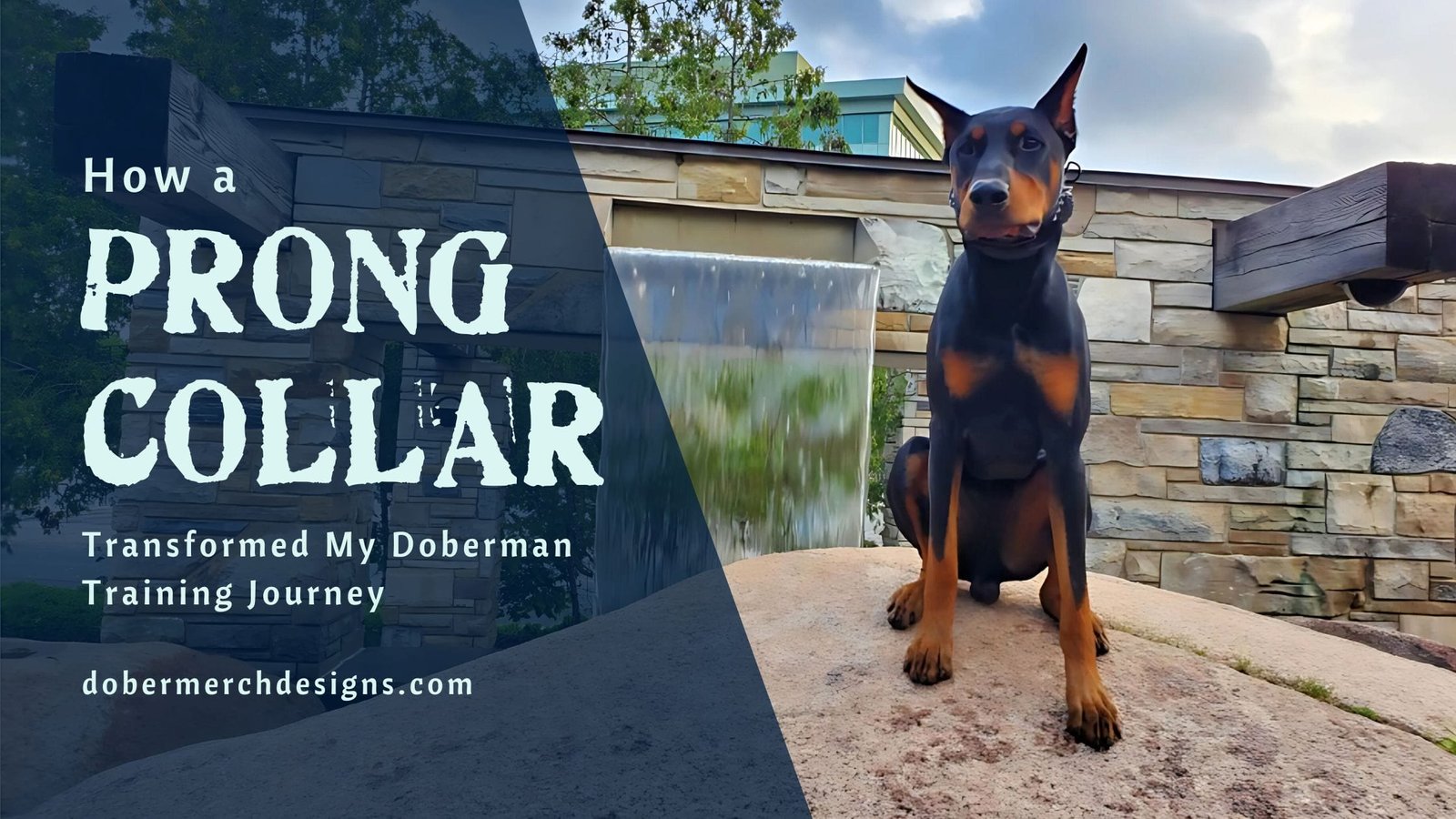
Discovery: Apollo, My First Doberman
When I first brought Apollo home, I was completely new to Dobermans. Honestly, I probably wasn’t ready for such a challenging breed. He came from a backyard breeder, and at the time I thought, “A dog is a dog is a dog.” I didn’t understand why choosing a reputable breeder mattered, and I certainly didn’t think I needed a “show dog.” Now I know there are good reasons to be picky, but that’s a story for another time.
Apollo had behavior problems almost from the start. He was aggressive on leash, reactive towards other dogs, and even had a serious bite history. Whenever he saw another dog, he would “redirect” and bite whatever was close by—usually my leg. I tried using a halti head collar, hoping it would help. It stopped him from pulling a bit, but did nothing when he went into full “lunatic mode” at the sight of a dog. Feeling desperate, I made the mistake of getting him neutered at just 7 months old, hoping it would calm him down. It didn’t. In fact, it seemed to make things worse.
I tried working with a few local trainers, but none had experience with working breeds like Dobermans. Some wouldn’t work with us at all. Others used methods that didn’t help. I was stuck—until I wandered into a local pet store and asked for advice. A sales clerk suggested something I’d sworn I’d never use: a prong collar. It looked like a torture device, and I was horrified. But I was out of options, so I gave it a shot. I walked Apollo home with it, and the change was incredible, even though I knew almost nothing about fitting or using it properly.
That day was a turning point. The prong collar saved my relationship with Apollo and restored my confidence as a budding trainer. It made me realize that I had a lot to learn about how dogs communicate. I dove into researching how to use it correctly, learning its history and discovering it was designed more than 200 years ago to mimic the way dogs naturally “correct” each other using their mouths. It might sound odd, but dogs don’t rely on their voices like we do—they rely on body language and gentle pressure, much like a mother dog would use on her pups.
With a properly fitted prong collar and some training, Apollo’s leash manners improved, and his reactivity lessened. Still, it took even more tools and time (like an e-collar) before we could walk calmly past other dogs. Tragically, Apollo passed away before his third birthday from DCM (a heart condition). Even though we didn’t fully conquer all his issues, he taught me so much.
Safety: Willow, The Doberman Who Changed Everything
After Apollo’s death, I promised myself I wouldn’t get another dog for a while. But one day, I found myself scrolling through a pet rehoming group on Facebook. That’s where I spotted a 5-year-old female Doberman who was causing trouble in her current home. Without much thought, I grabbed some liver treats and went to meet her. I knew right away I’d call her Willow.
Willow was scared of almost everything—loud noises, new people, unfamiliar places. She wasn’t “bad,” just fearful. At first, I thought using a prong collar on a nervous dog would make things worse. I was so wrong. That summer was busy, and Willow was jumpy, constantly trying to bolt. To save my arms (and my sanity), I decided to use the prong collar on her too.
To my surprise, it worked wonders. With the prong collar, Willow learned boundaries and understood that there were consequences for pulling on the leash. As a result, her confidence grew by leaps and bounds. Over time, we developed an incredible bond. She trusted me to guide her, and I trusted her to listen. She blossomed into a calm, secure companion and even became my first service dog. If I hadn’t experienced it myself, I never would have believed how much she transformed.
(We promise not to spam)
Working With Clients, and a New Puppy
Four years later, when I got Dante—a new Doberman puppy—I introduced the prong collar as soon as he started pulling around 12 weeks old. Now he’s 5 years old and doesn’t pull, whether he’s wearing the collar or not. I still use it because one sudden dart after a squirrel or cat could send me face-first into the street. With the prong collar, I have control, and Dante has clear communication.
Over time, I started using prong collars exclusively for my own dogs and my clients’ dogs. When fitted and used correctly, I’ve found it to be a gentle, safe, and effective tool, especially for powerful breeds like Dobermans. It’s not a magic wand that instantly fixes every problem, but it’s an incredibly helpful way to speak a language your dog truly understands—pressure and release, calm signals, and natural communication.
In my opinion, a prong collar is one of the most humane training tools you can use with a Doberman. It helped me guide Apollo, protect Willow, and set Dante up for success from puppyhood. For that, I’ll always be grateful.
One response to “How a Prong Collar Transformed My Doberman Training Journey”
Discover more from DoberMerchDesigns
Subscribe to get the latest posts sent to your email.


Leave a Reply